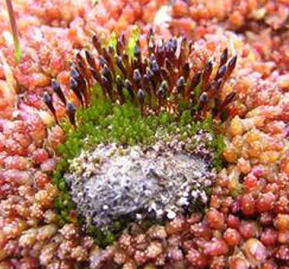
image from: https://jungfraualetsch.ch/en/protection-and-restoration/priority-species-and-habitats/rudolphs-tayloria-moss/
Tayloria altorum Herzog: The Fascinating High-Altitude Moss
Introduction
Tayloria altorum Herzog is a unique and intriguing species of moss belonging to the Splachnaceae family. Commonly known as Tayloria

image from: https://jungfraualetsch.ch/en/protection-and-restoration/priority-species-and-habitats/rudolphs-tayloria-moss/
, this tiny plant thrives in high-altitude environments, captivating botanists and enthusiasts alike with its remarkable adaptations and ecological roles. In this blog post, we’ll dive into the fascinating world of Tayloria altorum Herzog and explore what makes this moss so special.

image from: https://www.researchgate.net/figure/An-endemic-moss-of-the-subanctarctic-forests-Tayloria-mirabilis-Photograph-Silvina_fig6_230708757
Background
Mosses are small, non-vascular plants belonging to the division Bryophyta

image from: https://www.ecured.cu/Tayloria

image from: https://www.inaturalist.org/guide_taxa/1836776
. They lack true roots, stems, and leaves, instead possessing simple structures that perform similar functions. The

image from: https://www.nzplants.auckland.ac.nz/en/about/mosses/native-species/splachnaceae/tayloria-callophylla.html
Splachnaceae family, to which Tayloria altorum Herzog belongs, is known for its unique adaptations to nutrient-poor environments and its association with animal dung.
Morphology and Identification
Tayloria altorum Herzog is a small, acrocarpous moss, meaning it bears its sporophytes at the tips of the stems. The leaves are ovate to lanceolate, with a distinct costa (midrib) extending to the apex. The most striking feature of this moss is its brightly colored, elongated hypophysis (neck) of the sporophyte, which can range from yellow to red or purple. This elongated neck is an adaptation that helps attract insects for spore dispersal.
Global Distribution and Habitat
Tayloria altorum Herzog is found in high-altitude regions

image from: https://www.anbg.gov.au/abrs/Mosses_online/53_Splachnaceae__images.html
across the globe, including the Andes, the Himalayas, and the mountains of East Africa. It typically grows on animal dung or decaying organic matter in alpine and subalpine environments, where nutrients are scarce. The moss’s ability to thrive in these harsh conditions is a testament to its remarkable adaptations.
Ecological Roles and Adaptations
One of the most fascinating aspects of Tayloria altorum Herzog is its relationship with insects. The brightly colored, elongated hypophysis of the sporophyte attracts flies and other insects, which inadvertently pick up spores and disperse them to new locations. This mutualistic relationship ensures the moss’s successful reproduction and dispersal in nutrient-poor environments.

image from: https://www.inaturalist.org/observations/147248800

image from: https://admissions.wnmu.edu/academic/nspages/gilaflora/tayloria_acuminata.html

image from: https://davidtng.wordpress.com/
| Characteristic | Description |
|---|---|
| Family | Splachnaceae |
| Genus | Tayloria |
| Species | T. altorum Herzog |
| Habitat | High-altitude, on animal dung or decaying organic matter |
| Sporophyte | Brightly colored, elongated hypophysis |
| Spore Dispersal | Entomochory (dispersal by insects) |
Conclusion
Tayloria altorum Herzog is a remarkable moss that has captured the attention of botanists and enthusiasts worldwide. Its unique adaptations, such as the brightly colored, elongated hypophysis and its association with insects for spore dispersal, showcase the incredible ways in which plants can evolve to thrive in challenging environments. As we continue to study and appreciate the diversity of life on Earth, mosses like Tayloria altorum Herzog remind us of the beauty and resilience found in even the smallest of organisms. The next time you find yourself in a high-altitude environment, keep an eye out for this fascinating moss and ponder the intricate relationships that exist between plants and animals in these unique ecosystems.